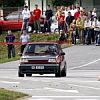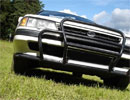8 prispevkov
Stran 1 od 1
-

mloncar - Uporabnik
- Prispevkov: 976
- Pridružen: Sr maj 12, 2004 11:47 am
- Kraj: Celje
razlika med MAP in MAF
naslov vse pove!
MAF vem de je mass airflow.. ..kaj je pa MAP?
MAF vem de je mass airflow.. ..kaj je pa MAP?
-

pugi405 - Poznavalec foruma
- Prispevkov: 1970
- Pridružen: Pe okt 11, 2002 4:01 pm
-

mloncar - Uporabnik
- Prispevkov: 976
- Pridružen: Sr maj 12, 2004 11:47 am
- Kraj: Celje
-

pugi405 - Poznavalec foruma
- Prispevkov: 1970
- Pridružen: Pe okt 11, 2002 4:01 pm
- mona
- Nov uporabnik
- Prispevkov: 24
- Pridružen: Po jul 05, 2004 8:18 pm
-

GorazdO - Poznavalec foruma
- Prispevkov: 2109
- Pridružen: So apr 17, 2004 8:04 pm
- Kraj: Ljubljana
hm.. na Subarujih maš tule dovolj obširen članek o MAF vs. MAP:
http://www.cobbtuning.com/tech/airflow/index.html
na kratko:
MAF Sensors
Mass Air Flow (MAF) Sensor is used by the engine control unit (ECU) to determine the weight of the air going into the engine. To do this, Subaru uses a cylinder shaped sensor mounted securely to the stock air cleaner box behind the passenger side headlight assembly. Inside the sensor there is a special wire or film which is kept heated to a certain temperature. As air passes through the sensor, this wire or film is cooled and the sensor determines how much electricity is required to keep the wire up to temperature. This enables the sensor to determine how much air (in weight) is passing through the sensor at any given moment. This signal is then sent to the ECU which it compares to a preprogrammed map to deliver fuel and ignition spark, taking into account other engine inputs such as engine RPM and temperature.
Pros:
* Highly accurate A/F Ratios for a wide variety of driving conditions
Cons:
* Present a restriction in air flow
* Fragile
MAP Sensors Speed-Density systems (used on the 2000+ models) calculate the weight of air going into the engine by using a Manifold Absolute Pressure (MAP) sensor, the Intake Air Temperature (IAT) sensor and the Perfect Gas Law. To accurately determine the correct weight of fuel needed, the ECU has a Volumetric Efficiency map stored in it which it uses to calculate how much fuel must be added for a proper Air/Fuel mixture.
#
Pros:
# Easy and inexpensive to implement
# Very durable
Cons:
# Does not compensate very well for changes in VE
# Not very accurate A/F Ratios under transient driving conditions (ie: non-WOT street driving)
http://www.cobbtuning.com/tech/airflow/index.html
na kratko:
MAF Sensors
Mass Air Flow (MAF) Sensor is used by the engine control unit (ECU) to determine the weight of the air going into the engine. To do this, Subaru uses a cylinder shaped sensor mounted securely to the stock air cleaner box behind the passenger side headlight assembly. Inside the sensor there is a special wire or film which is kept heated to a certain temperature. As air passes through the sensor, this wire or film is cooled and the sensor determines how much electricity is required to keep the wire up to temperature. This enables the sensor to determine how much air (in weight) is passing through the sensor at any given moment. This signal is then sent to the ECU which it compares to a preprogrammed map to deliver fuel and ignition spark, taking into account other engine inputs such as engine RPM and temperature.
Pros:
* Highly accurate A/F Ratios for a wide variety of driving conditions
Cons:
* Present a restriction in air flow
* Fragile
MAP Sensors Speed-Density systems (used on the 2000+ models) calculate the weight of air going into the engine by using a Manifold Absolute Pressure (MAP) sensor, the Intake Air Temperature (IAT) sensor and the Perfect Gas Law. To accurately determine the correct weight of fuel needed, the ECU has a Volumetric Efficiency map stored in it which it uses to calculate how much fuel must be added for a proper Air/Fuel mixture.
#
Pros:
# Easy and inexpensive to implement
# Very durable
Cons:
# Does not compensate very well for changes in VE
# Not very accurate A/F Ratios under transient driving conditions (ie: non-WOT street driving)
Power is nothing without Control; so Think, Feel, Drive...
-

mloncar - Uporabnik
- Prispevkov: 976
- Pridružen: Sr maj 12, 2004 11:47 am
- Kraj: Celje
8 prispevkov
Stran 1 od 1
Kdo je prisoten
Po forumu brska: 0 registriranih uporabnikov in 1 gost

